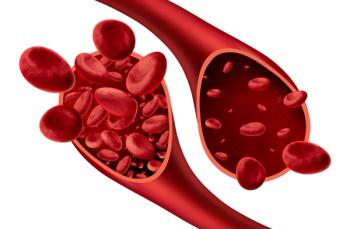
BLOG: Close call for Rx marketers on Part D
Why would HHS disrupt Part D when it's been a success for plans and for seniors?
By Tom Norton
As the U.S. heads towards a public market place in which Medicare, Medicaid, CHIPs, VA, and now Obamacare will shortly comprise almost
It started on January 6 when HHS unexpectedly released a new
In replacement of the current coverage, which allows all drugs in each of the above classes to be reimbursed under Part D, HHS proposed that only one brand product, and one generic would be made available in each of these important Part D categories.
I can only imagine how Rx marketers, deep into their 2015 Part D bidding plans, must have reacted to this development…And given the surprise nature of the announcement, I am sure more than a few wondered, “What the heck is going on at HHS?”.
On March 10, the rule was withdrawn, and plans to market to Part D for 2015 can continue. But to better understand this situation, let’s take a quick look at Part D’s history.
The Genesis of Medicare Part Dâ¨
When I first began my career with the Rx industry in the early 1980’s, I used to tell folks that, “Only one nickel of every U.S. health dollar is spent on prescription drugs.” It was a nice refrain, and I felt good saying it because at that time it was true.
But by the end of that decade, I’d stopped using the phrase. That’s because it was no longer true. By then, “The median price increases between 1985 and 1991 of a basket of 29 drugs increased 124.8%
The Politics of “High Drug Prices” and Seniorsâ¨
The street response to these rapid drug price increases was direct and devastating. During the 1990s the American pharmaceutical industry became a healthcare “punching bag” and began experiencing a
Certainly the most outspoken citizens on this issue were the millions of seniors who used the increasingly expensive Rx products every day. From this community came the signature mantra for the 1990s:
“Because my prescription drugs are so expensive, I have to choose between buying groceries, or paying for my drugs.”
At that time, no outpatient prescription drug coverage existed under Medicare. So, older Americans were forced to pay for these rapidly rising Rx costs, out of their own pockets. And they didn’t hesitate to loudly call out the Rx industry for “outrageously expensive drugs.”
The Part D Trigger: The Clinton Health Care Lawâ¨
Soon enough, the issue of “high drug prices” for seniors became hyper politicized. The ultimate Congressional expression of that concern was the
However, the issue of “unfair Rx drug pricing for seniors” was firmly planted in the mind of the American public. In the end, the unsuccessful 1993 Clinton effort actually set the table for what ultimately happened on outpatient drugs for seniors, a decade later.
Bush and Part D
â¨In 2003, the Bush Administration decided it was time to deal with this festering political issue. And thus was born the
From its beginnings in 2006, the plan was fairly successful and quickly flourished. Today, eight years later, an estimated 31 million seniors (three-fifths of all 52 million Medicare participants) are taking advantage of nearly
In sum then, after 20 years of debate, the outcome was positive. The Rx industry saw the light in 2003, negotiated lower prices for Rxs through private Part D insurance offerings, and seniors got the outpatient prescription drugs they had been wanting, at lower affordable, prices, all via a voluntary program.
And for the politicians, the issue of “outpatient drugs for seniors” was taken off the table – Even if Congress failed to provide for a long term way to pay for this
Why Would HHS Disrupt Part D?â¨
Given this history, 2014 arrived and surprisingly, all hell broke loose on Part D. The key question has to be why would HHS decide to disrupt a program that had been moving along so well? A few key “success” facts:
• Overall Part D Successâ¨Although we may argue as to exactly
The Protected Classes
From the start of the program in 2006,
• immunosuppressantsâ¨
• antineoplasticsâ¨
• anticonvulsantsâ¨
• antidepressantsâ¨
• antipsychoticsâ¨and
• antiretrovirals.
HHS stated that patients being treated with these Rxs required more product availability than other classes… “to mitigate the risks and complications associated with an
These six “protected classes”, indeed, do cover some of the sickest seniors in America - Organ transplant patients, cancer victims, epilepsy, mental illness, and AIDs.
For eight years, drug marketers who plan for their company’s products to be bid into the six “protected classes” of Part D had carried on stable, predictable business with the government. Patients soon came to depend on the stability of Part D, especially those who used the products provided in the “protected classes.”
So, one more time, why would HHS all of a sudden deny products to these very vulnerable patients who had been included in these “protected classes” for eight years?
Amazingly, given all of the “success” factors, the primary explanation offered by HHS for the rule was the following. Read this slowly:
“Increased competition: â¨In response to anti-competitive tactics that have contributed to inconsistencies in bidding, payments, and market price signals for Medicare Part D plans, the rule proposes to revise the regulatory definition of negotiated prices to require all price concessions from pharmacies to be reflected in negotiated prices. The proposed rule would require greater cost savings for beneficiaries in return for offering preferred cost sharing so that sponsors cannot incentivize use of selected pharmacies, including the sponsors’ own related-party pharmacies that charge higher rates than their competitors.” (
Admittedly difficult to understand, I turned to a
According to Wyman, aside from the highly restricted “protected class” formularies, essentially what HHS proposed to do would actually reduce competition by arbitrarily removing from Part D the pricing advantage that PBMs and chain pharmacies had been able to deliver to Part D for eight years. If the rule had been successful, the rule would have left the PBM/chains on an equal price footing with retail pharmacies and so, the price of prescriptions in Part D would have risen.
As a result, Wyman states: The Part D enrollees would have been adversely affected by the elimination of plans utilizing preferred pharmacy networks.⨠Likely, Rx access in 2015 would have been extremely confused for the effected Part D patients.⨠The estimated average increase in premiums for Part D patients would have been $63 per year for the 2015 plan year.â¨
Part D Preferred Drug Plan enrollees would pay an average of $80 to $100 per year in additional cost-sharing in 2015.â¨Overall, another study by
‘Close Call’ for Rx Marketing in Public Healthcareâ¨
So, following the
Hopefully, this recent “close call” with Part D is not a foreshadowing of what’s to come. But frankly, as the inevitable cost pressures develop in all these public programs, I would not be surprised to see more of the same, and soon.
In any case, the wise American Rx marketer would do well to fully understand and appreciate the developing mindset of all the new public programs now coming online…A mindset that is definitely not free enterprise oriented.
Tom Norton (
This blog originally appeared in
Newsletter
Get the latest industry news, event updates, and more from Managed healthcare Executive.





















































